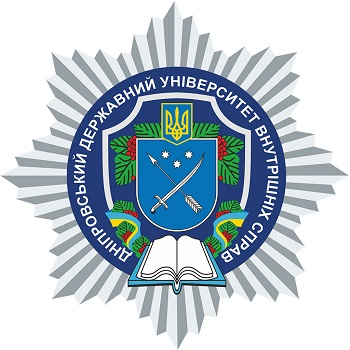PROBLEMS OF PREVENTING AND COMBATING DOMESTIC VIOLENCE IN UKRAINE UNDER MARITAL LAW
DOI:
https://doi.org/10.31733/2078-3566-2023-3-63-67Keywords:
combating domestic violence, protection of rights, martial law, problems of violence, countermeasures, gender-based violence.Abstract
The article covers the issue of preventing and countering domestic violence in Ukraine under martial law. An analysis of available scientific research and legal norms regulating the mechanism of prevention and countermeasures against domestic violence and gender-based violence was carried out today. It has been established that despite the sufficient state of legal regulation, the statistics of cases of domestic violence are increasing every year, in particular due to the war in Ukraine. It was determined that in order to effectively prevent and counter domestic violence, the victim must exercise his right to protection, that is, contact the relevant authorities for legal assistance. The following barriers that arose as a result of the war and are in the way of victims of domestic violence are characterized: the victim's independent leveling of this problem, that is, now is "not the time"; the need to solve other urgent problems: security, housing, work, children, a new place of residence, a new environment, etc.; location of the victim in a temporary occupation or in a zone of hostilities (does not have access to basic services provided in the territory controlled by Ukraine); travel abroad to a foreign language environment; lack of knowledge of the language and features of response in the country to cases of domestic violence; decrease in the speed of response of police officers to cases of domestic violence in connection with the involvement of officers in the protection of public order, especially in areas close to the combat zone, etc. It has been established that combating domestic violence requires a comprehensive approach from authorized officials of central executive bodies, and it is also necessary to involve public organizations and non-profit organizations, to carry out enhanced preventive work and education of the population regarding the consequences of violence.
References
1. Мілорадова Н. Е., Доценко В. В. Особливості прояву домашнього насильства під час війни. Габітус. 2023. Вип. 47. С. 194–199.
2. Мінка Т. П. Розмежування адміністративної та кримінальної відповідальності за вчинення домашнього насильства. Jurnalul juridic national: teorie şi practică 35.1. 2019. С. 98–101.
3. Про запобігання та протидію домашньому насильству : Закон України від 07.01.2018. URL: https://zakon.rada.gov.ua/laws/show/2229-19#Tex (дата звернення: 15.06.2023).
4. Як Стамбульська конвенція наближає Україну до ЄС? URL: https://armyinform.com.ua/2022/06/21/yak-stambulska-konvencziya-nablyzhaye-ukrayinu-do-yes (дата звернення: 15.06.2023).
5. Leheza Y., Pisotska К., Dubenko О., Dakhno О., Sotskyi А. The Essence of the Principles of Ukrainian Law in Modern Jurisprudence. Revista Jurídica Portucalense. 2023. S. 342–363. DOI: 389 https://doi.org/10.34625/issn.2183-2705(32)2022.ic-15.
6. Звіт про результати роботи Національної поліції України у 2020, 2021, 2022 році. Офіційний вебпортал Національної поліції України. URL: https://www.npu.gov.ua/diyalnist/zvitnist/richni-zviti (дата звернення: 15.06.2023).
7. Мілорадова Н. Е. Домашнє насильство під час війни: фактори збільшення та особливості звернення постраждалих. Психологічні та педагогічні проблеми професійної освіти та патріотичного виховання персоналу системи МВС України : матеріали Всеукр. наук.-практ. конф. (м. Вінниця, 24 берез. 2023 р.). Вінниця : ХНУВС, 2023. С. 207–208.
8. Pisotska К. Forms and methods of administrative activity of juvenile prevention units of the national police of ukraine. Juvenile policy as a component of supporting Ukraine’s national security and defense. Scientific monograph. Riga, Latvia: «Baltija Publishing», 2023. S. 318–351. URL : https://doi.org/10.30525/978-9934-26-276-0-15.
9. Малиновська Т. М., Володіна О. О. Профілактика вчинення домашнього насильства до осіб похилого віку. Право та Безпека. 2020. № 2. С. 81–85.

